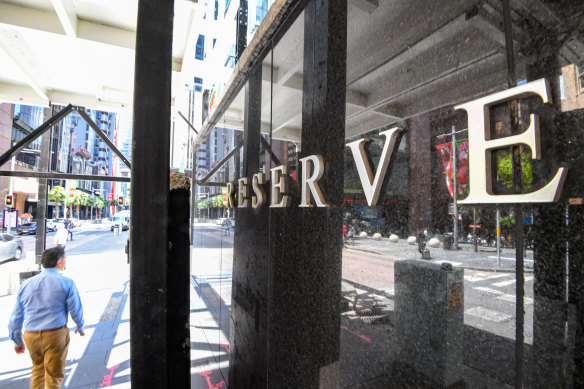That never happened, of course. But Fraser decided that, if this was the way the world was turning, he’d get in first and design his own inflation target, ensuring it was a sensible one.
Loading
The Kiwis, who were the first to introduce such a target, set it at zero to 2 per cent, which became the international standard. But, with help from the Reserve’s best people, Fraser decided on something more flexible: to hold the inflation rate between 2 per cent and 3 per cent “on average” over the cycle.
So, it wasn’t just higher than the others. While they had a target with sharp corners, our “on average” would free the Reserve from having to jam on the monetary brakes every time the consumer price index popped its head above 2 per cent.
Foreign officials kept telling the Reserve it should get a proper target like the Kiwis. But in the end, it was they who had to accept their target was too inflexible.
Fraser announced the new target in 1994, by casually dropping it into a speech to business economists. It wasn’t until the next Liberal treasurer, Peter Costello, arrived in 1996, that the target, and the Reserve’s operational independence, were formalised in an agreement between Costello and the new governor, Ian Macfarlane.
Opposition leader Peter Dutton has said that neither present Treasury Secretary Dr Steven Kennedy, nor Finance Secretary Jenny Wilkinson should be appointed to succeed Lowe because they would be “tainted” by their work with the Labor government.
This was ignorant nonsense. He failed to note that both those people were equally “tainted” by their close work with that last Liberal treasurer, Josh Frydenberg, throughout the pandemic.
So it’s worth remembering that, because of Fraser’s close connection to (by then) prime minister Keating, the money market smarties were convinced Fraser wouldn’t be raising interest rates before the 1996 election.
Wrong. He did. Indeed, he raised them before a crucial byelection, which Keating lost in the run-up to losing the election. Since then, governor Glenn Stevens raised rates during the 2007 election campaign, and Lowe during the 2022 campaign.
Getting back to the point, I’d have been happy to see someone from Canberra put in to implement the (more sensible of the) reforms proposed by the recent review of the Reserve’s performance. Such an insular, self-perpetuating institution needs a regular injection of new blood.

The RBA will change from holding 11 meetings a year to eight.Credit: Peter Rae
With the benefit of hindsight, it’s almost as though Lowe’s speech last week outlining the Reserve’s plans to implement the review’s recommendations – with Bullock having done most of the work on those proposals – constituted her application for the top job.
Or maybe it was the Reserve’s written undertaking to the treasurer that, should he agree to preserve the order of succession, it would nonetheless faithfully implement the changes needed.
That so many of those changes – which would be of little interest to any but Reserve insiders and the small army of Reserve-watching outsiders – can be described as major reform says much about what a stick-in-the-mud outfit successive governments have allowed it to become.
The number of meetings of the Reserve Bank board will be cut from 11 a year to eight. Really. Wow.
Loading
In making that change, the Reserve will continue its practice of having four of its meetings timed to come soon after publication of the quarterly CPI. But it will use the opportunity to have the remaining four meetings come soon after publication of the quarterly national accounts.
The present practice of meeting on the first Tuesday of the month meant it was meeting the day before it found out how fast the economy had been growing.
Get it? The Reserve could have fixed this problem any time in the past several decades by moving its board meetings to fit. But no, it took a full-scale independent review to make it change its practice. We like doing things the way they’ve always been done. (The good news? No more meetings on Melbourne Cup Day.)
The only significant administrative change will be to have decisions about interest rates made by a board better able to argue the toss with the governor. In particular, what they need (and is already in the pipeline) is someone with expertise in real-world wage-fixing.
The real world keeps changing under the feet of economists, and we need central bankers capable of changing their views in an economy where the cause of inflation is changing from excessive wage growth to excessive profit growth.
Loading
That requires more debate within the Reserve, and more opportunity for the newly recruited bright young economics graduates to debate matters with the old blokes at the top.
The Reserve’s problem is too much deference to the views and wishes of the governor. It’s long been a one-man band. Bullock’s appointment as the first female governor ends that problem at a stroke. Let’s hope she does better than turn it into a one-woman band.
Stay connected with us on social media platform for instant update click here to join our Twitter, & Facebook
We are now on Telegram. Click here to join our channel (@TechiUpdate) and stay updated with the latest Technology headlines.
For all the latest Business News Click Here
For the latest news and updates, follow us on Google News.
